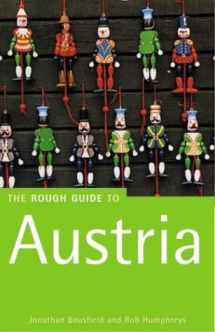
The Rough Guide to Austria 2 (Rough Guide Travel Guides)
Book details
Summary
Description
INTRODUCTION
It’s the spectacular, snowcapped mountains of regions like the Tyrol that provide the most familiar images of Austria – a landscape of jagged peaks and rampaging rivers, giving way to green pastures studded with onion-domed churches. Yet Austria is by no means all alpine vistas: the country stretches across central Europe for some 700km, from the shores of the Bodensee in the west to the edge of the flat Hungarian plain in the east. Far removed from the archetype are the wetlands and reed beds of Burgenland, and the dramatic sequence of stopes that carve their way up the Erzberg in Styria. In Upper and Lower Austria in particular, a predominantly low-key landscape of gentle rolling hills and vineyards can come as something of a surprise to first-time visitors. Yet this fertile, low-lying northern half of the country is, in fact, where the majority of Austrians live and work, many of them within commuting distance of the capital, Vienna – the country’s chief tourist destination after the alpine regions.
For all its bucolic charm and fondness for the days of empire, when Vienna sat at the centre of the vast, multinational Habsburg dynasty, Austria today is thoroughly modern, clean, efficient and eminently civilized, with uniformly excellent tourist facilities. Like neighbouring Switzerland, it’s also a supremely law-abiding nation, where no one jaywalks or drops litter, and the trains and trams run on time. Whether you’re staying in one of the popular skiing, hiking or spa resorts, or in an out-of-the-way Gasthof, you’re likely to experience "Gemütlichkeit" – a typically Austrian term expressing a mixture of cosiness and hospitality – at some point during your visit.
Looking at the country at the close of the twentieth century – stable, conservative and wealthy – you wouldn’t think that Austria had spent the first half of the century struggling to find a national identity. After all, it was only in 1918, when the Habsburg Empire disintegrated, that the idea of a modern Austrian nation was born. The new republic, with a population of just eight million reluctant citizens, was riven by left- and right-wing political violence and, as a result, the majority of Austrians were wildly enthusiastic about the Anschluss with Nazi Germany in 1938. The price of Austria’s participation, and ultimately defeat, in World War II, however, was Allied occupation. For ten years the country was split, like Germany, into Soviet, American, British and French zones. As a gesture of détente, the Soviets finally agreed to withdraw their troops, in return for Austria’s "permanent neutrality". At this point, Austria turned over a new leaf, and recast itself as a model of consensus politics, with an almost Scandinavian emphasis on social policy as the guiding principle of national life. Postwar stability saw the growth of a genuine patriotism, while the end of the Cold War put the country, and its capital, back at the heart of Europe.
In 1995, Austria became a full member of the European Union, a move that for many was a sign that the country had finally entered the mainstream of European politics. From time to time, Austria’s more reactionary elements have attracted widespread media attention, most notably during the Waldheim affair, when the wartime record of the president was called into question, and in the recent rise of the Far Right under the charismatic Jörg Haider. But the reality is that the Socialist party retains the strongest influence in government, as it has for much of the postwar period, and the country’s political stability, for the most part, continues intact.


We would LOVE it if you could help us and other readers by reviewing the book
Book review



